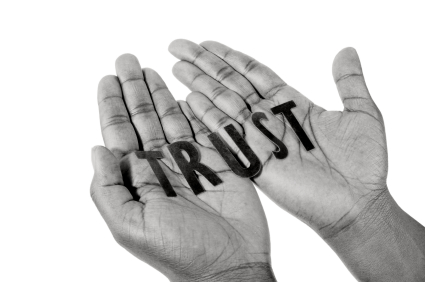Law firms were slow to catch the social media wave. But once it looked safe to go into the water—the firm next door was in—a majority followed. Law firm marketers got busy setting up a firm presence on Facebook and Twitter—featuring Super Lawyers, seminars, and seasons’ greetings. Those with greater resources launched firm-branded blogs and played Instagram, Pinterest, etc. Followers, likes, shares, and comments were the goal, with the reward being greater exposure and business opportunities.
But then something very disappointing happened. The “organic” social media produced by law firms—the stuff that was supposed to create conversation and conversion—appeared to be mostly seen and applauded by a handful of their own employees, lawyers, and a few IRL friends and relatives.
Don’t take my word on that; there is more evidence.
2017 Digital and Content Marketing Survey.
According to a recently published Greentarget and Zeughauser Group survey of in-house corporate counsel, which annually explores various aspects of law firm digital and content marketing, social media ranks at the bottom of “most valued content created by law firms.” That’s right, just 4 percent give a damn about your tweets and status updates.
Ironically…. a whopping 91 percent of marketers who were also surveyed report they are “investing in social media”!
“Bueller? Bueller? Bueller?”
To be fair to the 91 percent, buckets within a marketing budget differ from firm to firm. And, although blogs are technically social media intended to create conversation and convert prospects, they were separately considered in portions of this survey. (According to the survey, blogs were seen as a “credible source of legal, business and industry news and information” by 75 percent of in-house counsel compared to 65 percent in 2015.) But it is likely that many marketers consider blog writing, editing, posting, and maintenance to fall in a firm’s social media bucket, and thus the 91 percent. I hope I am not being generous.
Still, the survey authors suggest that firms’ “methods for client alerts and newsletters are part of well-established practices, whereas [emphasis added] social media sharing and amplification is more time-intensive and expensive.” If true, it certainly begs the question: What are law firm’s getting in return for their time and expense?
Kill organic social media for the enterprise.
Avinash Kaushik blogs at Occam’s Razor. If you’re unfamiliar with his blog or the philosophical and scientific rule of Occam’s Razor, here’s the essence: The simplest of competing theories are preferred to the more complex. Avinash does this really, really, well.
I’ve been a huge fan over the years, and I’ve read his published books, Web Analytics 2.0 and Web Analytics: An Hour A Day. I have dozens of flagged pages as proof. He’s smart, and he’s practical. He is the Digital Marketing Evangelist for Google and The Co-Founder and Chief Education Officer for Market Motive. He is on the board of advisors for USC Annenberg School of Communication and Journalism, the University of California Irvine’s Web Intelligence Certificate program, and the University of Toronto’s Social CRM program.
I assure you that he’s one of the good guys and someone we law firm marketers should listen to on a variety of levels and topics.
Most recently, Avinash challenged marketers of all industry to stop wasting enterprise resources on “organic social media”—defined as the kind where you post meaningful things about your firm/company in order to build brand loyalty. (And “hope” for increased sales to justify your efforts.)
He writes, “You can imagine how gosh darn excited I was at the advent of Facebook and Twitter (first real social networks). There were a billion people there, spending a meaningful amount of time on these wonderful platforms. Excitedly, brands could have a presence (a “page”) where they could contribute meaningful updates (info-snacks) in order to be a part of the organic conversations people were already having by the tens of millions. Daily meaningful brand connections would be converted into brand familiarity, shifts in brand perception, feeding brand loyalty. #orgasmic”
And goes on to say that: “None of the above transpired….”
How does he know? He says all the data you need in order to learn that your organic social media on Facebook, etc. has tanked can be found in three public bits of information. You don’t need to understand analytics, you don’t need to dig, you don’t need to hire a consultant. You just need to look.
Crunching the numbers.
Hypothetically speaking, let’s say your law firm’s Facebook page has 6,000 warm bodies who “like” you. (Probably a stretch for most law firms, but I’m going for a round number.)
- Applause Rate. Your most recent post—congratulating newly anointed Super Lawyers—has 50 likes or emotions (I heart this post!). Divide 50 by 6,000 to get your applause rate, which is…drum roll…a paltry .00833 percent. (“A painful stab in the heart.”)
- Conversation Rate. Now take the total number of comments on your post—seven—including “Congratulations,” “Well-deserved,” “He gets his work ethic from his mom!” and etc. Divide that by your universe of 6,000 warm bodies and your conversation rate is a glass shattering .00116 percent.
- Amplification Rate. This is the number that confirms whether you truly added value on a human scale or merely “pimped” your company. Let’s say you had three shares—one from a proud dad, one from a best friend, and one from the marketing manager who is paid to do it. Three divided by 6,000 is 0.0005%. Heart stopping, right?
Are you still with me?
With this simple analysis—the potential to engage 50+7+3 people per post—you can decide what portion of your marketing budget you should allocate to your enterprise’s social media. The answer is zero.
Wait, you say that’s not fair? Alright, let’s add up the applause, conversation, and amplification rates on your Twitter and Instagram, and, being generous, your firm-branded blogs. Let’s compute the monthly, quarterly, and yearly totals. Is that any better?
To be clear, marketing and enterprise brand building differ from business development (sales)— but you need both. Arguably, a personal Facebook, LinkedIn, or Twitter presence in deft hands can be an effective tool for “networking” for business. But, it’s obvious to me that organic social media for the enterprise isn’t moving the needle—I’ve looked. (Please correct me if your firm is an outlier.)
Are your social media platforms useless?
No, says Avinash. From an advertising perspective, the couple billion people on Facebook and hundreds of millions on other social channels are an audience that might be of value to your law firm. Should you kill your organic social strategy and switch to a paid social media strategy? He says yes. Don’t waste your money on fuzzy organic social media goals. Buy advertising from Facebook, Twitter, Instagram, and, yes, LinkedIn—all of which can give your organic social media strategy purpose.
“Your [social advertising] strategy can drive short and medium-term brand and performance outcomes,” says Avanish, “You can set aside the useless metrics like impressions and 3-second video views. Set aside hard-to-judge and equally useless Like and Follow counts. Measure the hard stuff so that you can show a direct line to company profit. Define a purpose for the money you are spending.”
I completely agree. In tests I’ve run on organic posts versus promoted paid posts, paid “usually” outperforms. Sure, the click ratio on a paid post can be dismal—particularly if you’re not using best practices—but at least you’re reaching a new audience. Even one inquiry from a potential client is a better result than a mom or brother liking your Super Lawyers post.
[2022 update: I say maybe to social media advertising. It’s getting crowded. Easy to skip. It is hard to find your ideal audience despite all the category-targeting social sites offer. In the end, you can spend thousands of dollars on social media advertising and not come out ahead (been there done that). The decision to spend depends strictly on who you are trying to target and influence. And you have to design and develop effective advertising. (Whatever that is, we still don’t know!) Sure, lots of agencies say they can help, but it’s up to the law firm to know where they are most needed and by whom. What to communicate and why. I’ve worked with agencies that don’t know law firms. They may have some interesting angles and decent creativity. But you need people on the inside to guide them and be diligent in ensuring the ads are reaching real people, and create buzz. It’s the wild west out there. You also need to be willing to cut your losses if you don’t succeed.]
Law firm content sets a low bar.
Enterprise social media aside—yes, you should consider advertising—from a pure content marketing perspective. Clients appreciate meaningful content in all its shapes and forms—words and images. But, according to the Greentarget survey, we’re not doing an exceptional job at that either.
Including social media, e-newsletters, blogs, and the like, the survey found that only 52 percent of in-house counsel ranked law firm content “very good-to-excellent,” an improvement from 43 percent in 2015. Ranking in the range of “satisfactory or better but not quite very good,” dropped to 42 percent in 2017 from 49 percent in 2015, suggesting that law firms are getting “better” at content. The survey’s authors purport that it is indeed possible that the (improved) results show that firms with “more defined content strategies” are “separating themselves from the pack while others languish.”
After all these years of producing content and 48 percent of firms are falling below very-good, it means only one thing to me—nearly half of law firm content is either inadequate, incorrectly distributed, repetitive (you were scooped by other firms that acted quickly), or you’re producing junk. That would be legalese that has no apparent business value. If your target is business-to-business, the lawyers in your firm that deal with businesses should lead the charge. Speak business, not legalese.
The survey (and Avinash and I) suggests you need to define its purpose clearly and have a strategy and a plan. Stay tuned for a topic that I promise for another, more uplifting post.
When you get that plan, then you need great writing. Writing a legal brief is very different than writing something the public, even in-house counsel, wants to read. According to this survey, I know “we’re” getting better, but not quite very good is not where you want your law firm to be.
More info:
My company, JayneNavarre.com, has over 20 years of experience working exclusively with law firms on strategy for content and communications. We are forward thinking, entrepreneurial, and work with some of the best law firms, both in the U.S. and internationally. Please give me a call.

PS: Thanks, Technolawyer.com for selecting this post as SmallLaw Pick of the Week!
“Congratulations to Jayne Navarre of Virtual Marketing Officer on winning our SmallLaw Pick of the Week award: Law Firm Social Media Is a Waste of Time, and Here’s Why”




